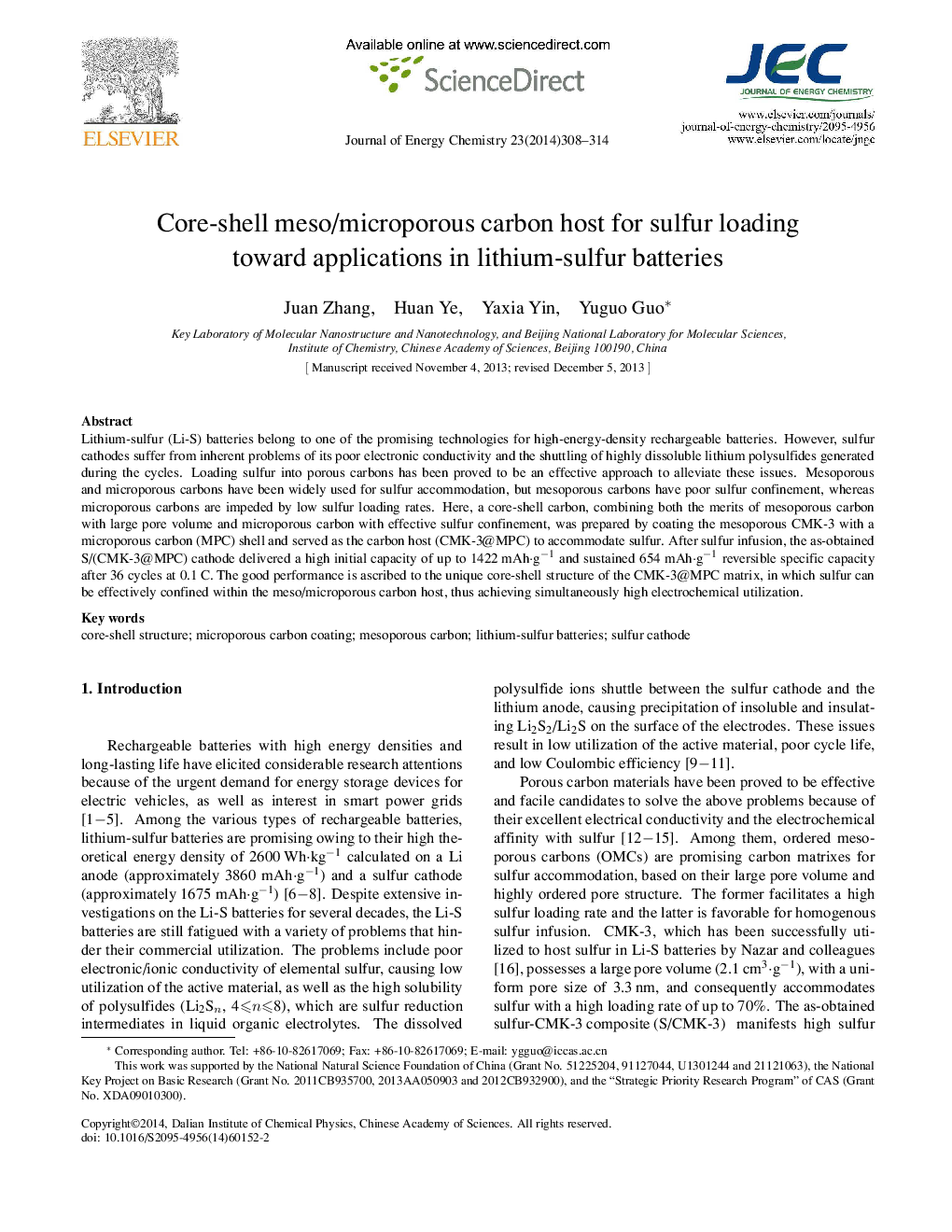| Article ID | Journal | Published Year | Pages | File Type |
|---|---|---|---|---|
| 63905 | Journal of Energy Chemistry | 2014 | 7 Pages |
Lithium-sulfur (Li-S) batteries belong to one of the promising technologies for high-energy-density rechargeable batteries. However, sulfur cathodes suffer from inherent problems of its poor electronic conductivity and the shuttling of highly dissoluble lithium polysulfides generated during the cycles. Loading sulfur into porous carbons has been proved to be an effective approach to alleviate these issues. Mesoporous and microporous carbons have been widely used for sulfur accommodation, but mesoporous carbons have poor sulfur confinement, whereas microporous carbons are impeded by low sulfur loading rates. Here, a core-shell carbon, combining both the merits of mesoporous carbon with large pore volume and microporous carbon with effective sulfur confinement, was prepared by coating the mesoporous CMK-3 with a microporous carbon (MPC) shell and served as the carbon host (CMK-3@MPC) to accommodate sulfur. After sulfur infusion, the as-obtained S/(CMK-3@MPC) cathode delivered a high initial capacity of up to 1422 mAh·g−1 and sustained 654 niAh·g−1 reversible specific capacity after 36 cycles at 0.1 C. The good performance is ascribed to the unique core-shell structure of the CMK-3@MPC matrix, in which sulfur can be effectively confined within the meso/microporous carbon host, thus achieving simultaneously high electrochemical utilization.
Novel core/shell nanocarbon material is obtained by coating a mesoporous carbon core with a microporous carbon shell and serves as an ideal host for sulfur loading towards efficient applications in Li-S batteries.Figure optionsDownload full-size imageDownload as PowerPoint slide
